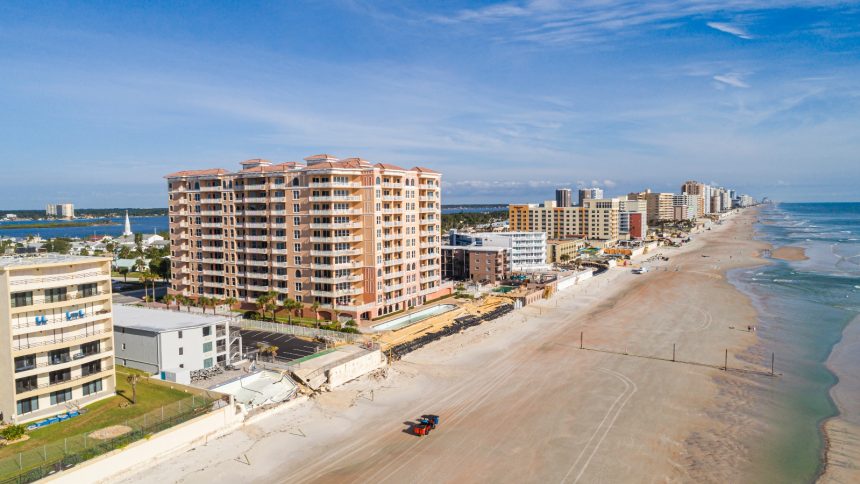Mayor Lisa Hendrickson of Redington Shores, Florida, is facing a critical situation as the town’s protective beach erodes at an alarming rate. Battling against the menacing storms of the Gulf of Mexico, Hendrickson and her constituents are in urgent need of new sand to fortify their coastline. However, the U.S. Army Corps of Engineers, responsible for beach restoration, has placed a significant roadblock by insisting on easements from property owners before delivering the much-needed sand.
The standoff between the Corps and homeowners underscores the escalating conflicts between protecting coastal areas and property rights in the face of climate change. As sea levels rise and storms intensify, the costs of safeguarding beachfront properties have skyrocketed, leading to a deadlock in Redington Shores and other vulnerable coastal regions.
The Corps’ demand for perpetual public access behind private properties has created a gridlock in obtaining essential easements for beach replenishment. While efforts have been made to persuade property owners to grant easements, many remain hesitant, fearing overcrowding and intrusion on their private spaces.
Local officials, including Senators Scott and Rubio, have criticized the Corps for bureaucratic delays and urged a reconsideration of their strict easement policy. Despite mounting pressure, the Corps shows no signs of backing down from its stance, leaving coastal communities like Redington Shores in limbo.
As the standoff enters its second year, the need for immediate action to protect vulnerable coastal areas grows more urgent. With residents and the Corps at a stalemate, the threat of catastrophic damage looms large, highlighting the dire consequences of failing to reach a compromise in the battle to save our shrinking coastlines.






